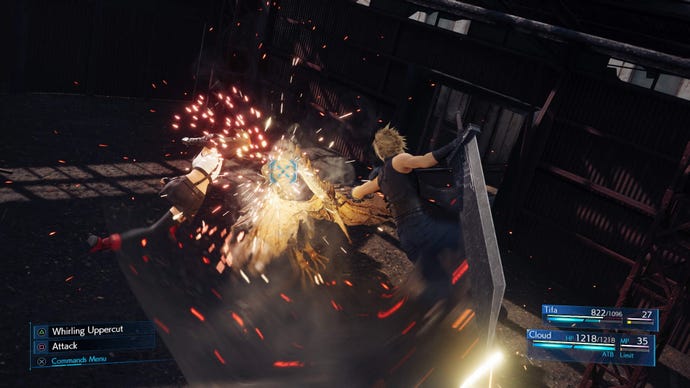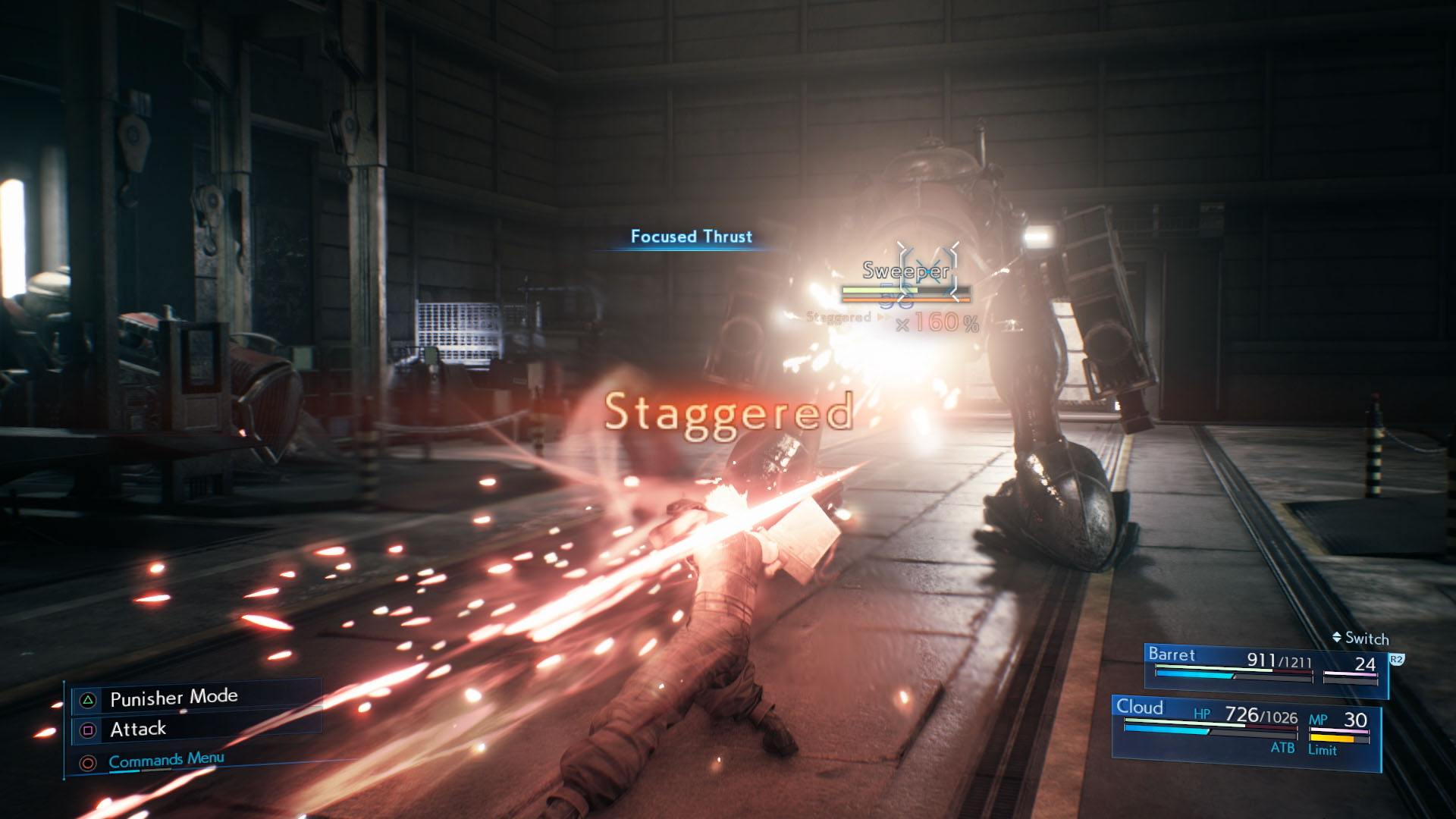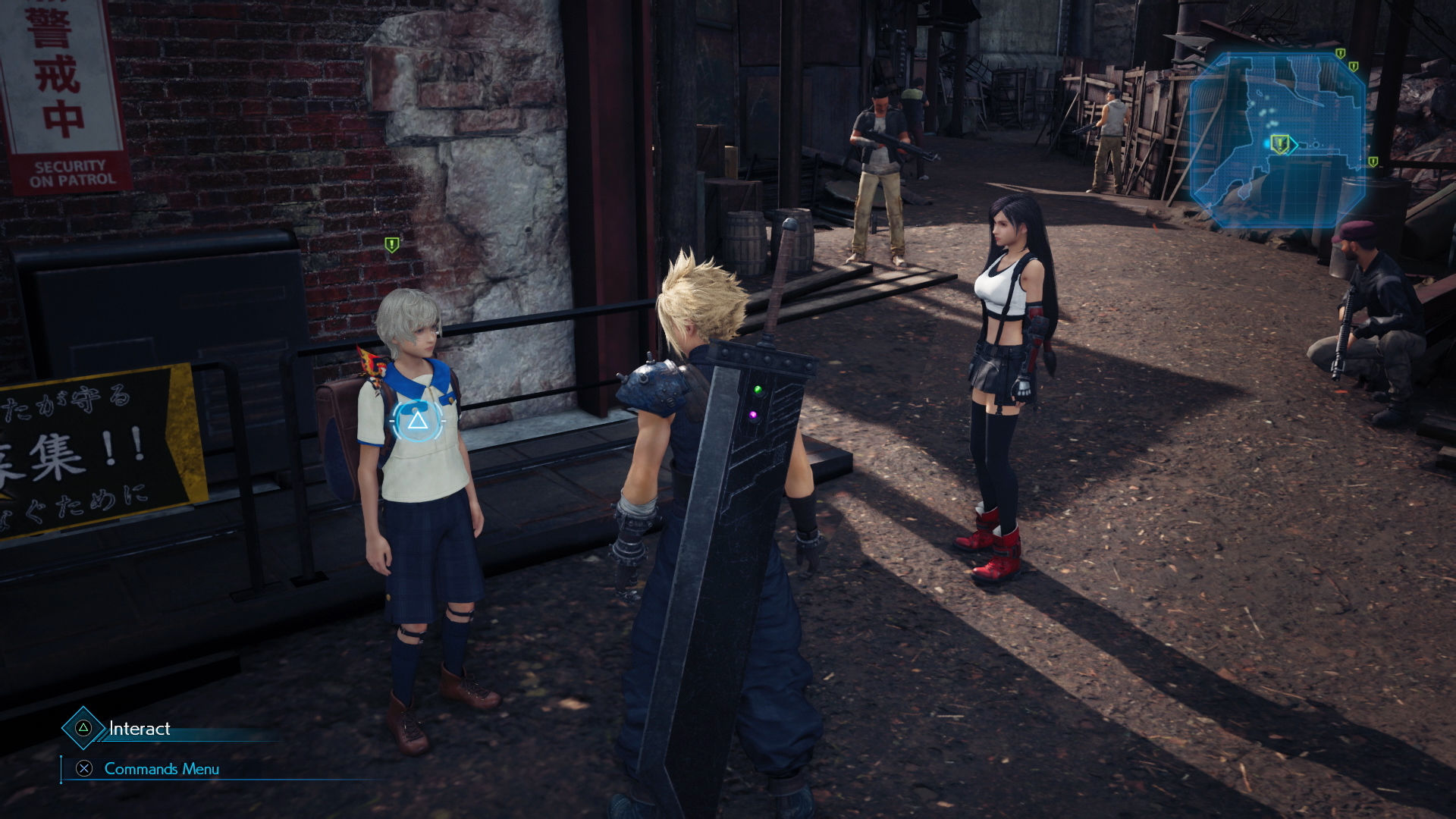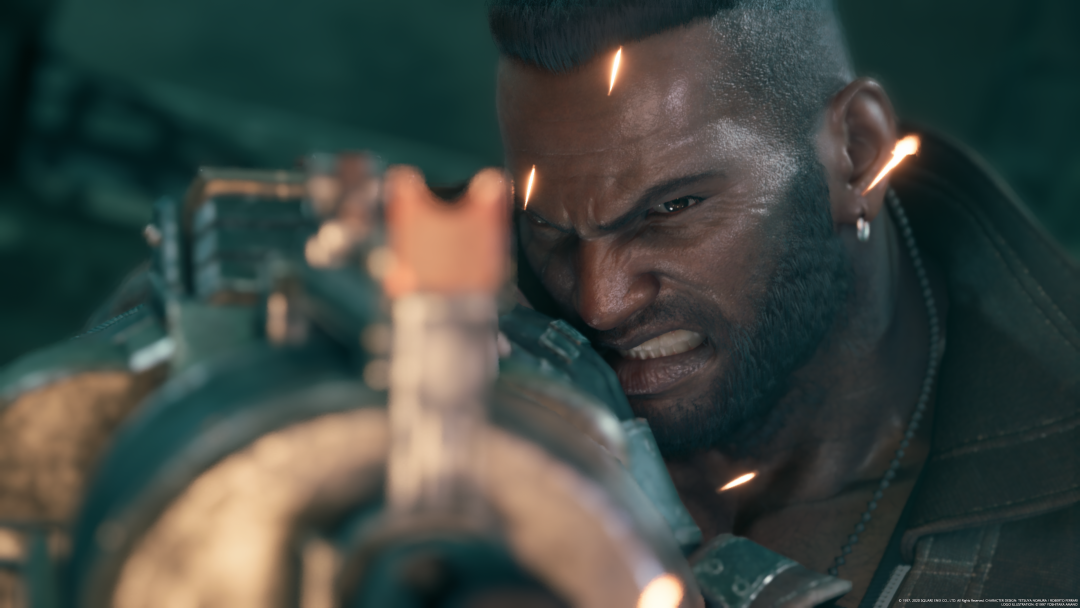Final Fantasy 7 Remake Combat Primer: tips and advice for mastering battles
Final Fantasy 7 Remake has an interesting and unique new combat system that's at once an action RPG and a loving recreation of the original game's turn-based battles - and it can take a little while to master.
Truly understanding FF7 Remake's combat involves getting your head around each of the component parts of a battle, which is more complicated than you'd think. It's a layered combat system; at the very core is the active time battle mechanic that powered the original game, but layered on top of that is a more action game like system of direct control. There's also the stagger system, borrowed straight from Final Fantasy 13, and then rocking away behind the scenes is all that important RPG character customization: materia, skills, summons, elemental strengths and weaknesses.
Because of these interlocking systems, it can get a little overwhelming - especially if you're unfamiliar with the systems of the original FF7 this game is building on. As such, we figured we'd put together a little primer detailing the things you'll surely want to know before you begin taking on Shinra's toughest forces in combat.
The stagger bar is your new (old) best friend
The most important new feature of combat in FF7 Remake is the Stagger system - though this isn't entirely new to Final Fantasy fans, as the entire Final Fantasy 13 series of games also had a mechanic called stagger that worked in pretty much exactly the same way. Essentially, a stagger bar is a measure of the enemy's composure in combat. As you face them down and damage them, you can interrupt their composure and focus, and if you fill that bar to the top, the enemy becomes 'staggered'. Think of it as being like a 'stun' meter in a fighting game, where if you get hit too much you enter a stunned state and can't attack or even defend yourself. Stagger is like that - and the good news is it's a one-way deal - your party can't get staggered.
When in a staggered state, the enemy is more vulnerable to all attacks. Normal moves, abilities, magic and limit breaks will all do significantly more damage, and there are specific moves that also have stagger bonus damage when executed on an enemy in that state. For bosses and the most hardy of enemies, the lion's share of damage inflicted to their health bar should be done while they're staggered.
So, this is the key piece of combat advice, right at the top of this guide: learn the stagger system and master the stagger system, because it is your route to smashing even the hardest enemies in the game.
First of all, you should figure out what moves are effective for staggering enemies more quickly. Abilities like Cloud's Focused Thrust and Barret's Focused Shot will raise enemy stagger faster than normal moves or abilities. Abusing an enemy's weakness with elemental magic or interrupting an enemy winding up for a big attack can cause it to enter a 'Pressured' state as indicated just below the stagger bar; a pressured enemy is more open to attacks in general, making this a great time to increase stagger.
Blocking will save your bacon, and Materia can make it even better
While FF7 Remake is designed in a way that makes it a mix of turn-based combat and real-time action, it's not a game you can entirely slack off in. As most players will probably learn early on, possibly even with the Guard Scorpion boss, you can't just eat big attacks constantly and be fine. Healing is limited through MP and items, plus your ATB bar - and so blocking is more important in this game than in any Final Fantasy to date.
Blocking is vital, in fact. In the later sections of FF7 Remake, an attack that would usually do 5000 damage can be reduced to 1000 or less simply by blocking. In hard mode and the postgame content, blocking is a necessity. Better still, blocking can be turned into a powerful offensive tool.
The Steadfast Block materia decreases damage taken when blocking even further but also fills the ATB gauge while guarding, thus allowing you to use blocking to power up to offensive attacks. There's also the Parry materia which unlocks the ability to parry after successfully blocking, making things a little more like a traditional action game. Both of these matera are available from Chadley's research side quest.
Assess absolutely everything
Speaking of Chadley and his Battle Intel Reports, you'll want to get the Assess Materia from him by chatting to him and kicking off his side quest in Chapter 3 - and then you'll want to use Assess on absolutely everything.
There's a few reasons for this. First of all, Assess is actually tied to a couple of Chadley's missions, which in turn unlock some powerful and useful materia, as mentioned above. But more important is how the Assess materia reveals the weaknesses of enemies right across the game - even powerful bosses.
Exploiting elemental weaknesses is really important, and what element might disrupt an enemy isn't always clear - but knowing for certain with Assess allows you to damage and stagger opponents more effectively. Always be sure to read the flavor text that's put alongside enemies in Assess too - as well as cute and interesting lore drops, this information often contains hints as to other combat weaknesses.
Elemental strengths and weaknesses are vital, and the elemental materia is gloriously overpowered
As mentioned above, once you've scanned for weaknesses using Assess, you'll then want to exploit that weakness. This is where elemental magic comes in, and it's always a smart idea to across your active party members always have access to at least one spell of each of the core elements - Fire, Ice, Lightning and Wind. Often a quick zap of the right spell can put an enemy into pressured status or even interrupt a big move they're winding up to perform.
On top of that, elemental materia can be used in combination with magic and your weapon or armor for devastating effects. If you put Lightning magic materia and Elemental materia into a double slot on a weapon, for instance, that weapon will now deal thunder element damage - ideal for taking down robotic enemies. How much elemental damage is done depends on the Elemental materia level.
If you do the same in an armor slot, an even better bonus emerges - you can resist lightning element moves and damage from enemies. If the elemental materia is high level enough you can nullify or even absorb that element's damage - essentially making you nigh-invincible in certain encounters. For late-game and post-game encounters, using elemental materia right can be the difference between an encounter being a painful grind or a breeze.
Use Materia to change characters to your liking, even drastically
The cast of FF7 Remake all fit into obvious basic categories. Cloud is your all-rounder. Tifa is a glass cannon, powerful up-close but easily KOed. Barret is a ranged, even-spread damage dealer, and also a tank. Aerith is your mage and healer, and is best kept held back. But with that said, FF7 was always designed as one of the most open-ended FFs, and the remake is no different.
Characters have basic stats that grow as you level up, but materia can drastically impact a character's utility. Equip lots of magic materia, for instance, and you can raise your magic stats specifically. Combine that with specific equipment and you could totally turn Cloud into a dedicated mage - if that's what you want.
Keep an eye out for weapons and equipment that help you to lean into this customization, too - such as strength-endowing bracelets that have no materia slots 'cos who needs magic. Barret is unique in that he has an entirely different move set associated with a different kind of weapon, too - you'll have an opportunity to buy the first from the Moogle Emporium in Chapter 8 - and this swaps out his ballistic move set for a crushing physical attack. Don't be afraid to warp the characters to your liking in order to better fit your play style.
Still struggling? Don't forget shortcuts and classic mode
While we do believe that FF7 Remake has the best action RPG combat the series has ever managed, it's understandable if you find it isn't for you. There are three ways around this. One is simply to drop to easy mode. The second is to make sure you don't forget shortcuts. Access shortcuts by hitting the 'Battle Settings' option on the main menu - a button you could easily complete the whole game without pressing.
In here you can set shortcuts for several for each character that you can then execute with button shortcuts - thereby making the action in FF7 Remake more closely resemble a traditional action hack-and-slash game and meaning you'll need to open the slow-motion ATB menu a little less often.
The other end of this spectrum is classic mode. If you find the action a little too much, classic mode automates the moment-to-moment combat and instead lets you focus on the strategy of choosing commands, MP and HP management and so on. All are valid ways to play - so if it isn't clicking for you, don't be afraid to switch things up.















